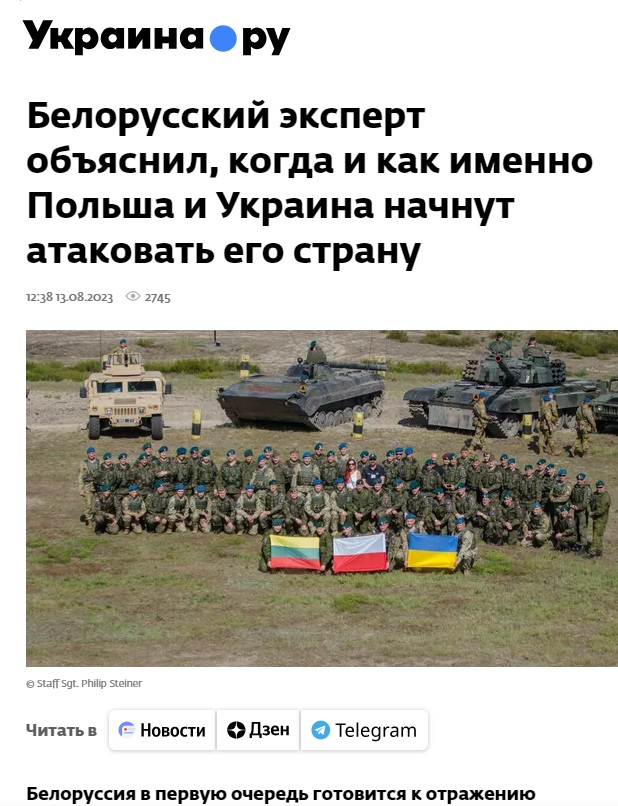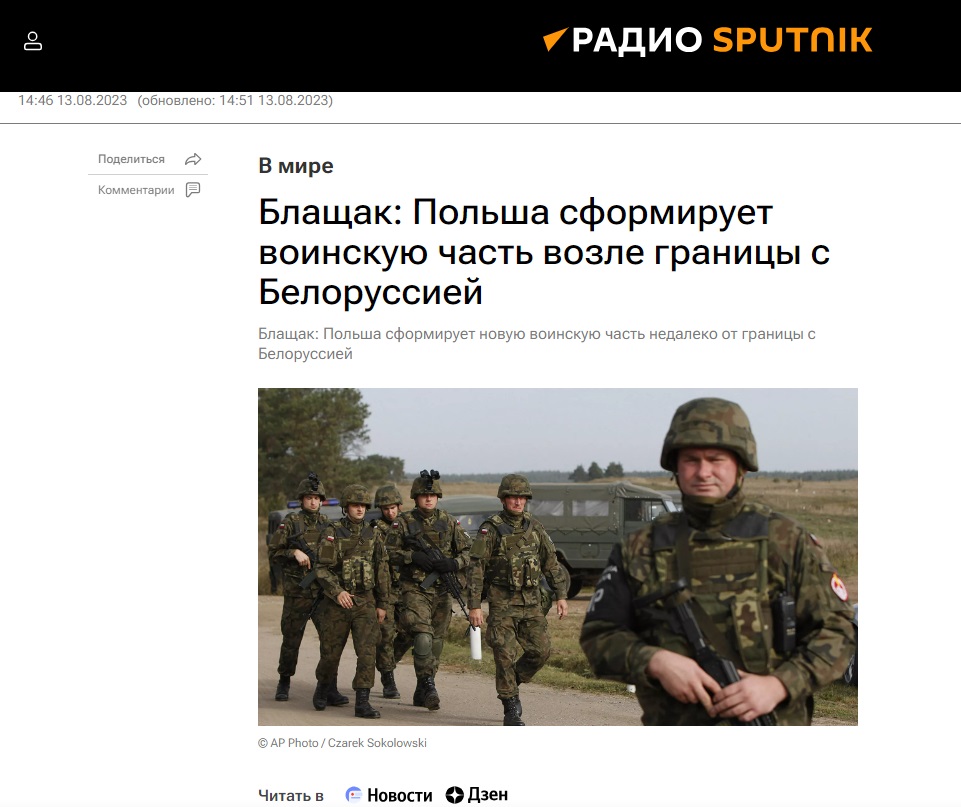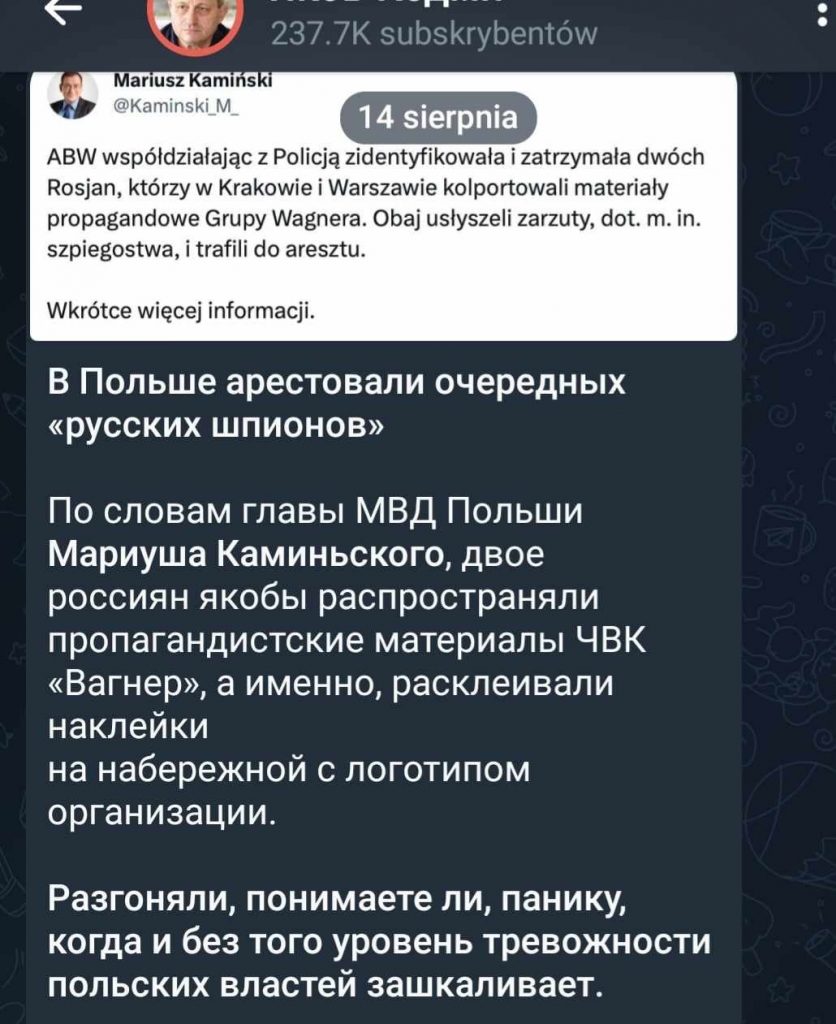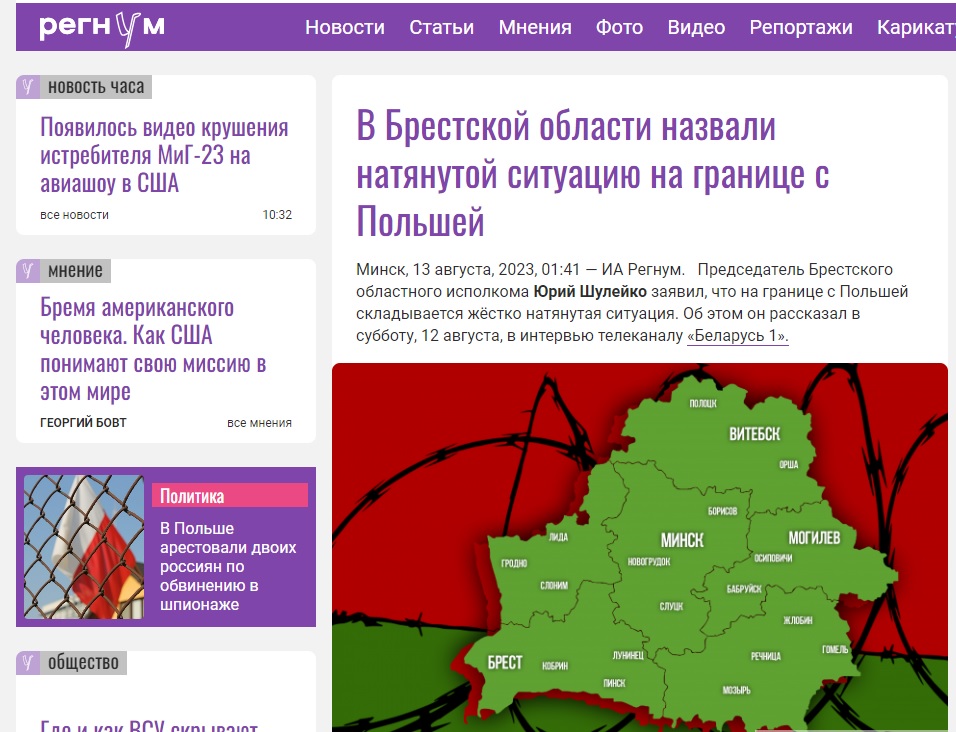The Russian disinformation machine continues its efforts to portray Poland as a “provocateur” and “aggressor”. Moscow’s attention this time has been concentrated on actions involving the intimidation of Russians and Belarusians with the vision of Poland’s “impending attack” on the Belarusian state. It is worth noting that in the perception of Russians and Belarusians, the “Polish attack” on Belarus effectively means declaring war on Russia as well. From this standpoint, Poland is a country that is supposedly planning to ignite World War III.
In this ongoing disinformation stream, Russian media centres (in collaboration with Belarusian ones) are attempting to exploit every informational factor to manipulate and strengthen the discussed message. This way, the Minister of National Defence’s announcement regarding the establishment of a new military formation was used, as well as information about preparations for the parade on the occasion of the Polish Armed Forces Day. In the falsified vision of reality crafted by Minsk and Moscow, every one of these events serves as “evidence” of Warsaw’s “aggressive intentions”. On the one hand, Minister Mariusz Błaszczak’s statement is supposed to indicate another stage of Poland’s “preparations” for an attack. On the other hand, the preparations for the military parade are meant to “conceal the true purpose of the troop movement” – which is the deployment of the army across the border, from where Polish soldiers are supposed to launch an attack on Belarus.
In addition to the mentioned key direction of constructing messages, Russians try to refresh topics regarding the so-called “Polish Russophobia” and allegedly “raging spy mania in Poland”. In a particular context, the Russians have included, among others, communication about the arrest of citizens of the Russian Federation in connection with the pasting of stickers featuring the logo of the so-called “Wagner Group”, which were likely part of operations aimed at instigating panic in Poland (as part of actions related to the presence of the so-called “Wagnerites” in Belarus).
In a broad sense, Poland is portrayed by Moscow and Minsk as an “extremely aggressive” state, “responsible for escalating tensions in the region”, a “country persecuting Russians”, an “oppressive” and “militaristic” country, as well as one “generating problems and stimulating conflicts”. Against the demonised Poland, Russia appears as a country “loving peace”, “defending itself” and “fighting for rights, democracy and freedom”. The actions of Moscow’s disinformation apparatus, however, are not limited to shaping such an image of Poland solely to achieve informational goals regarding the Russian-speaking space. Russian sources and pro-Russian propagandists cooperating or sympathising with the Kremlin infect the information space of other countries with data messages (actions with global reach). The portrayal of Poland in a highly negative light is combined with the image of NATO and the USA, resulting in the depreciation of the entire Western image. We can, therefore, expect that as tensions increase in Africa, the Russians will continue to blame the West for these phenomena. In order to illustrate the “demonic character” of the USA and NATO, as an example of “aggressive actions by the West” against Russia, they will refer to the “dreadful Poland” – which has become a threat to world peace as a result of “being a puppet of the USA”. Thus, it is highly probable that informational attacks on Poland, aimed at portraying our nation as an “aggressor” and “provocateur”, will intensify in the upcoming months.
Author: dr Michał Marek
Public task financed by the Ministry of Foreign Affairs of the Republic of Poland within thegrant comp etition “Public Diplomacy 2023”
Fot. Ministerstwo Obrony Narodowej





